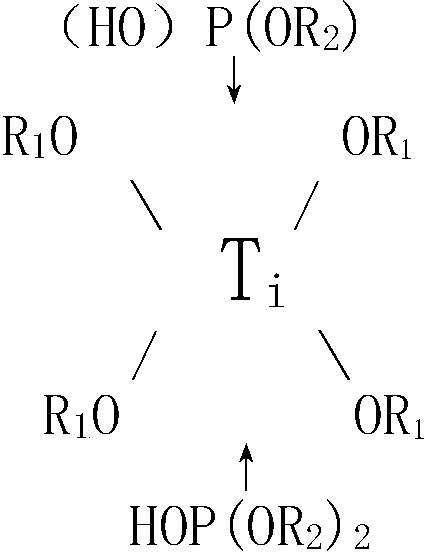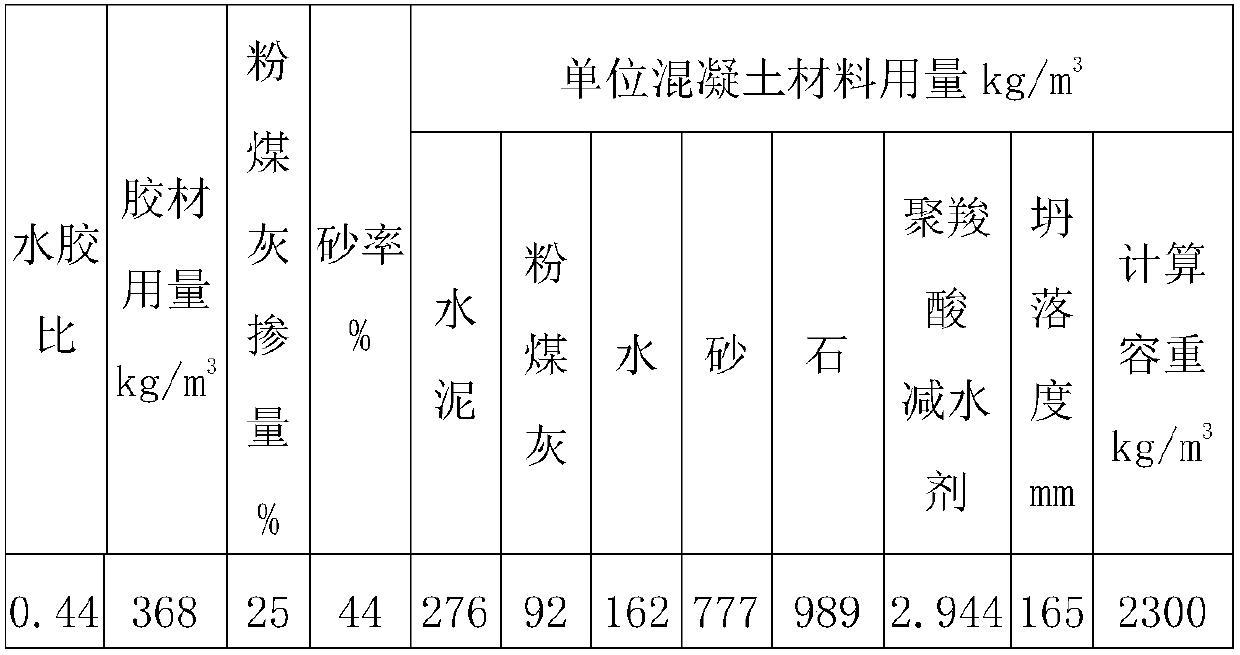A high-efficiency concrete performance enhancing additive and its preparation method
An additive and concrete technology, applied in the field of building materials, can solve the problems of restricting the application of concrete materials, limited waterproof ability of additives, poor self-compactness of concrete, etc., and achieves the effect of improving the resistance to temperature difference change, improving the corrosion resistance and enhancing the bonding force.
- Summary
- Abstract
- Description
- Claims
- Application Information
AI Technical Summary
Problems solved by technology
Method used
Image
Examples
Embodiment 1
[0023] First in parts by mass: titanate phosphate compounds (600 mesh, R 1 =C 8 , R 2 =C 12 ) 10 parts, zinc oxide (500 mesh) powder 6 parts, activated carbon (800 mesh) 5 parts, white carbon black powder (1200 mesh) 20 parts are sent into the mixer and fully mixed for 5 minutes to make powder. Then add 40 parts of polyester fibers (10 mm in length and 20 μm in diameter) to obtain product 1.
[0024] In order to test the performance of high-efficiency concrete performance-enhancing additives, the following methods are used for evaluation:
[0025] 1. Preparation of reference concrete
[0026] The benchmark concrete gradation is C35 concrete, see Table 1
[0027] Table I
[0028]
[0029] 2. Add high-efficiency concrete performance-enhancing additives to the benchmark concrete gradation C35, see
[0030] Table II
[0031]
Embodiment 2
[0033] First in parts by mass: titanate phosphate compounds (800 mesh, R 1 =C 10 , R 2 =C 14 ) 12 parts, zinc oxide (600 mesh) powder 6 parts, activated carbon (1000 mesh) 5 parts, white carbon black powder (2000 mesh) 20 parts are sent into the blender and fully mixed for 10 minutes to make powder. Then add 40 parts of polyester fiber (15 mm in length and 25 μm in diameter) to obtain product 2.
Embodiment 3
[0035] First in parts by mass: titanate phosphate compounds (1000 mesh, R 1 =C 10 , R 2 =C 16 ) 13 parts, zinc oxide (800 mesh) powder 6 parts, activated carbon (1200 mesh) 5 parts, white carbon black powder (3000 mesh) 20 parts are sent into the mixer and fully mixed for 12 minutes to make powder. Then add 40 parts of polyester fibers (15 mm in length and 20 μm in diameter) to obtain product 3.
[0036] 3. The preparation method is to add 1 kg of performance-enhancing additive products to 1 cubic meter of reference concrete (C35) to obtain concrete samples 1-3, and then test each concrete sample. The performance comparison is shown in the table below.
[0037] Table three
[0038] Pilot projects
[0039] Conclusion: It can be seen from the above table that concrete 1-3 adds high-efficiency concrete performance-enhancing additives to concrete, so that the increase rate of concrete impact and wear resistance is 8.7%-9.5%; durability > 300 times; splitting and axia...
PUM
| Property | Measurement | Unit |
|---|---|---|
| particle size | aaaaa | aaaaa |
| particle size | aaaaa | aaaaa |
| particle size | aaaaa | aaaaa |
Abstract
Description
Claims
Application Information
 Login to View More
Login to View More - R&D
- Intellectual Property
- Life Sciences
- Materials
- Tech Scout
- Unparalleled Data Quality
- Higher Quality Content
- 60% Fewer Hallucinations
Browse by: Latest US Patents, China's latest patents, Technical Efficacy Thesaurus, Application Domain, Technology Topic, Popular Technical Reports.
© 2025 PatSnap. All rights reserved.Legal|Privacy policy|Modern Slavery Act Transparency Statement|Sitemap|About US| Contact US: help@patsnap.com



